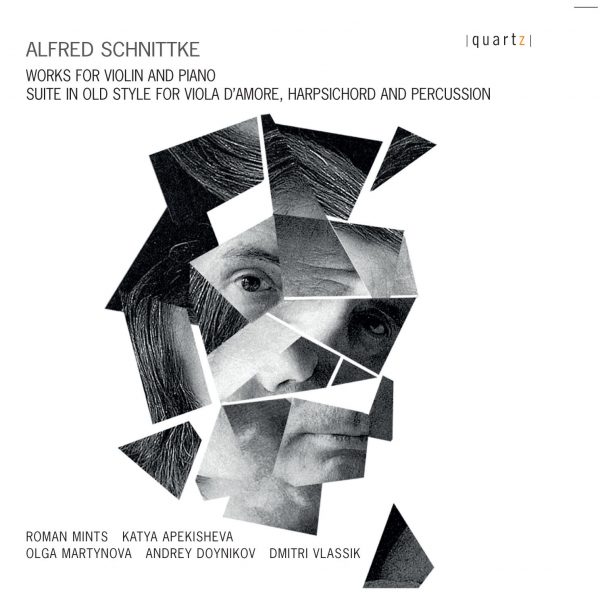eVIOLution
Price range: £4.99 through £11.99
Vihuela de arco (440 Hz)
Lyra-viol (415 Hz)
Viola da Gamba (390 Hz & 415 Hz)
This recording thus serves as homage to the memory of the glorious period, in which some of these instruments existed, in the form of a suggestive approach to the disquieting and enigmatic sonic world of the time. The exquisitely selected ingredients for this menu are sheep gut strings, Venice catline gut roped bass strings according to Praetorius, black horse hair for the bows, historical tunings (such as the French music played at 390 hertz), historical temperaments (Pythagorean for the Vihuela), English scordatura tuning, instruments made according to old techniques, instrument models of the sixteenth and seventeenth centuries, etc…
About This Recording
The capricious fantasy of man and the continuous interaction of ancient cultures have created the appearance, coexistence and fusion of a multitude of musical instruments in an incredible variety of forms and characteristics. However, seldom have the “most apt” survived the capricious changes of aesthetics and fashion that have followed one another in the history of western music. Harps, Lyres, Zithers, Vihuelas, Psalteries, Panduras, Rabels…inhabited the domain of daily musical practice, whereas today it is rare to find a live example of these instruments; one finds some under the threat of extinction, and others fallen by the wayside. Some came from India, Greece, Byzantium, and Arabia through the incursions into the Iberian Peninsula by opulent civilizations. Others were brought on voyages to the colonies of Africa and America through the curiosity of the humanists of the Renaissance. Moreover, due to the Renaissance taste for an exotic aesthetic and for the creation of hybrids, as one can confirm in the iconography of allegorical and mythological materials, they managed to conceive beautiful and delicate specimens such as the Lira de mendigo (Pauper’s lyre) or the Trompa marina (Horn of the sea).
As I mentioned, few survived; it was as if illnesses and the European climate were lethally hostel to these delicate indigenous instruments.
Paradoxically, an abundance of music of tremendous importance for the evolution of western music was inspired, written and conceived for these instruments and for their particular acoustic characteristics and organological-morphological possibilities (number of strings, resonance, playing technique…). The contradiction of this paradox rests in the fact how these works sound today played by the instruments that did survive, by adapting themselves with dignity to a new aesthetic, leaving us, only the vague memory of an ethereal dream of those original instruments. On the other hand, more than 500 years of difference in aesthetic taste makes us think that if we were to try, for example, the recipes from the kitchen of Leonardo de Vinci, probably more than one of them would make us feel nauseous. Nevertheless, one hears that the same Leonardo, aside from inventing outlandish devices, played madrigals on the lira de arco, whose physiology and strings of sheep gut, surely produced a harmonious sound that must have invoked the delight of the Renaissance Man (who believed he entered, in this way, into resonance with the universe), but would give us strange sensations to hear today.
This recording thus serves as homage to the memory of the glorious period, in which some of these instruments existed, in the form of a suggestive approach to the disquieting and enigmatic sonic world of the time.
The exquisitely selected ingredients for this menu are sheep gut strings, Venice catline gut roped bass strings according to Praetorius, black horse hair for the bows, historical tunings (such as the French music played at 390 hertz), historical temperaments (Pythagorean for the Vihuela), English scordatura tuning, instruments made according to old techniques, instrument models of the sixteenth and seventeenth centuries, etc… These intoxicate the spirit in a melancholy dream that directly connects with the harmonic alchemy, the occult philosophy, the mysticism and the magic of the musical Renaissance.
Track Listing
-
Diego Ortiz
- Tratado de Glossas (i) Recercada Segunda
- Tratado de Glossas (ii) Recercada Primera
- Tratado de Glossas (iii) Recercada Tercera Antonio de Cabezon
- Fabordon del sexto tono y glosado del tiple Diego Ortiz
- Tratado de Glossas (iv) Recercada Cuarta
- Tratado de Glossas (v) Recercada Quinta Alfonso Ferrabosco
- UT RE MI FA SOL LA (Fantasia a tres)
- Lessons for the Lyra-Viol: Lesson I (i) Almaine
- Lessons for the Lyra-Viol: Lesson I (ii) Coranto
- Lessons for the Lyra-Viol: Lesson II (i) Galliard
- Lessons for the Lyra-Viol: Lesson II (ii) Coranto
- Lessons for the Lyra-Viol: Lesson III (i) Almaine
- Lessons for the Lyra-Viol: Lesson III (ii) Coranto Mr. de Saint-Colombe
- Pieces de Viole: Chaconne Sr. de Machy
- Pieces de Viole (i) Prelude
- Pieces de Viole (ii) Allemande Georg Philipp Telemann
- Der Getreute Musickmeister: Adagio - Allegro K. F. Abel
- Pieces de Viole: Allegro (Sonate d-moll)




